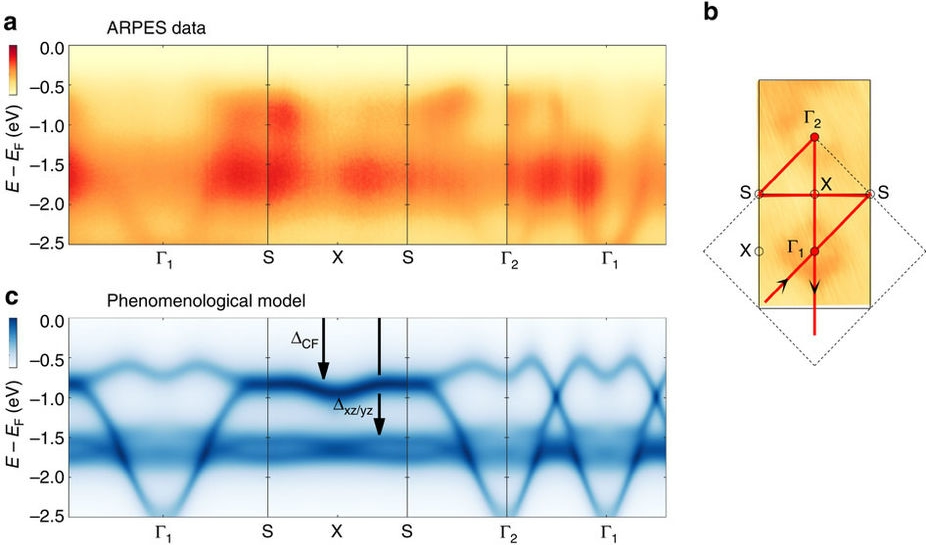Realization of a combined band- and Mott insulator
Recently the UZH research group of Johan Chang uncovered - using angle-resolved photoemission electron spectroscopy - the nature of the Mott phase in Ca2RuO4 that has puzzled for decades.

The mechanism of the Mott phase in Ca2RuO4 has puzzled researchers for decades. This material is a paradigmatic case of multi-band Mott physics including spin-orbit and Hund's coupling. Several theoretical proposals have been put forward, however progress has been impeded by the lack of knowledge about the low-energy electronic structure. Using angle-resolved photoemission electron spectroscopy the group of Prof. Johan Chang recently provided the band structure of the paramagnetic insulating phase of Ca2RuO4 and showed how it features several distinct energy scales. Comparison to a simple analysis of atomic multiplets provides a quantitative estimate of the Hund's coupling J=0.4 eV. Furthermore, the experimental spectra are in good agreement with electronic structure calculations performed with Dynamical Mean-Field Theory. The crystal field stabilisation of the dxy orbital due to c-axis contraction is shown to be important in explaining the nature of the insulating state. It is thus a combination of multiband physics, Coulomb interaction and Hund's coupling that generates the Mott insulating state of Ca 2RuO4. These results underscore the importance of Hund's coupling in the ruthenates. Our findings suggest an orbital differentiated picture where the dxy orbitals are band insulating whereas the resulting half-filled dxz/yz band undergoes a conventional Mott transition.
-

- Band structure along high-symmetry directions
D. Sutter et al., Hallmarks of Hunds coupling in the Mott insulator Ca 2RuO4
Nature Communications 8, Article number: 15176 (2017)